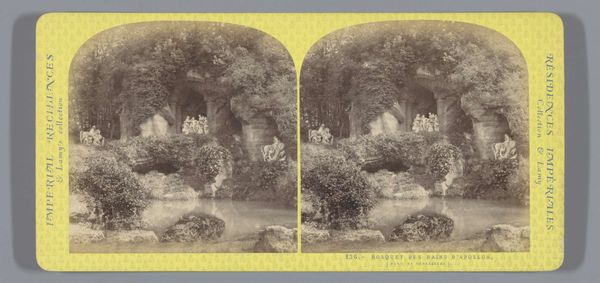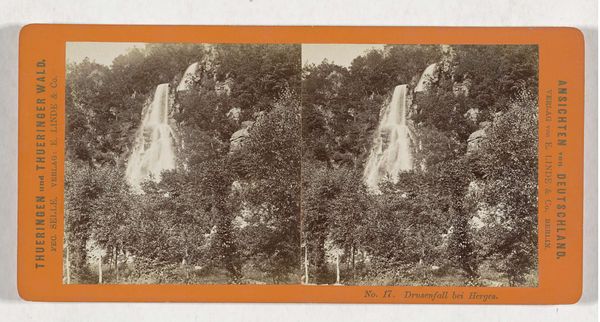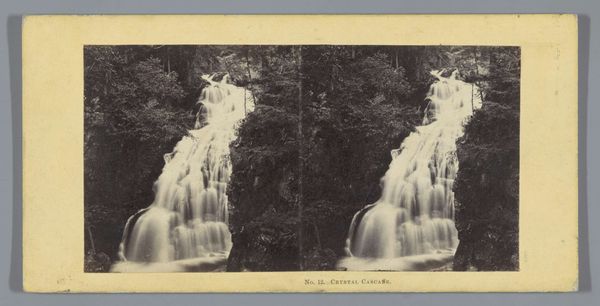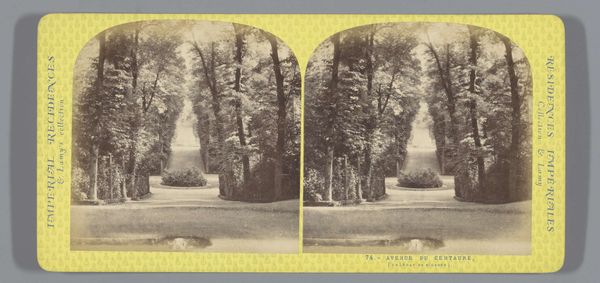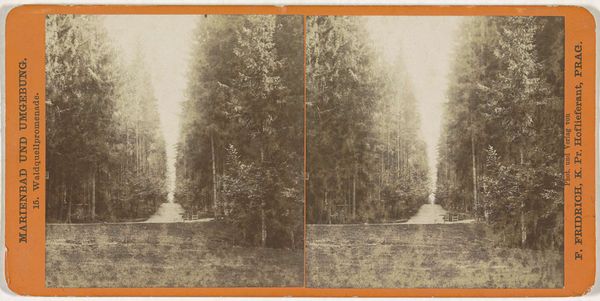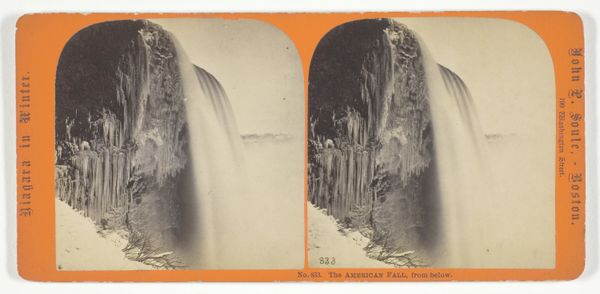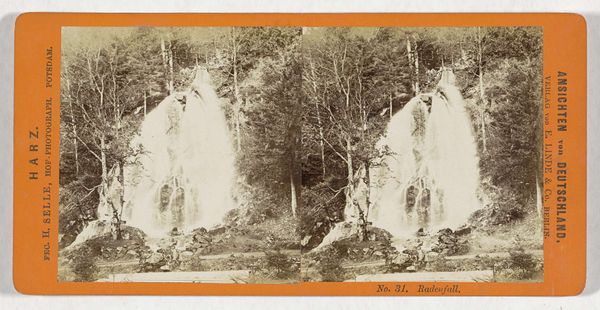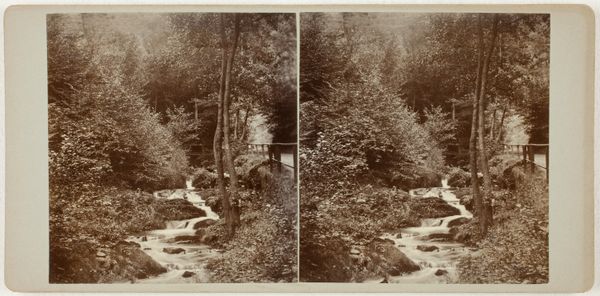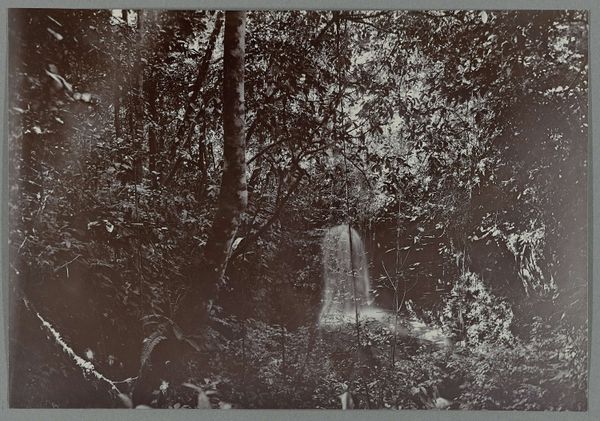
Dimensions: height 85 mm, width 170 mm
Copyright: Rijks Museum: Open Domain
Curator: Today we're looking at "Giessbachfall nabij Brienz," a gelatin silver print, a photographic marvel by Ernest Eléonor Pierre Lamy, dating approximately from 1860 to 1880. Editor: My immediate impression is a contrast. The rigid geometry of the surrounding cliffs against the almost ghostly cascade of the falls, and the delicate balance achieved through grayscale tones. Curator: Lamy's choice of the gelatin silver print process is significant here. It was rapidly gaining popularity during this period for its relative ease of production compared to earlier methods, enabling wider dissemination of images. Consider the accessibility it provided. Editor: True, but let's not disregard the form. Look how Lamy employs the stereoscopic format – the doubled image -- to amplify the three-dimensionality. He's manipulating the viewers' perceptions, offering a heightened experience of space and depth in the scene. Curator: It’s a deliberate invocation of the sublime. Capturing this sublime experience became almost industrial with these new photographic practices and the advent of tourism to locales like the Swiss Alps. People expected to witness and relive their experiences, thus creating both market demand and cultural appreciation for this type of imagery. Editor: Absolutely. The framing of the image focuses attention. It allows the cascading water to function as a dominant, almost theatrical element, while the texture within the foliage softens the stark, cool aspects, which keeps it from seeming sterile or severe. Curator: And the framing itself is important. By choosing to create prints mounted onto card, it turns these landscapes into commodities, packaged experiences ready to be taken home and consumed. A sort of 19th-century souvenir, documenting not just a place, but the act of seeing that place. Editor: Yes, but what is compelling about the work continues to lie within its aesthetics. Notice the tonal range captured. Lamy wasn't just recording information; he was carefully interpreting a landscape, presenting the emotionality and experience via formal photographic aspects. Curator: Precisely. Lamy and his contemporaries shaped how future generations viewed and consumed such landscapes, standardizing visual languages of grandeur. Editor: Seeing how all of that blends helps one truly recognize Lamy's thoughtful manipulation. Curator: Indeed, a testament to how technological advancements were intertwined with social and aesthetic shifts of that time.
Comments
No comments
Be the first to comment and join the conversation on the ultimate creative platform.
